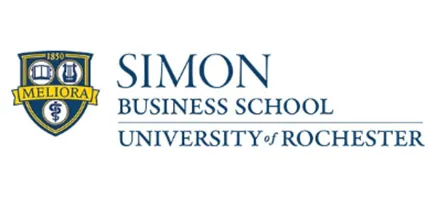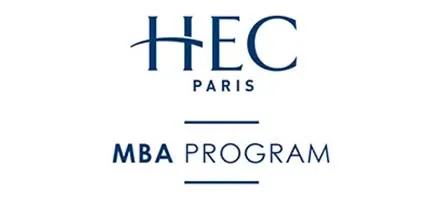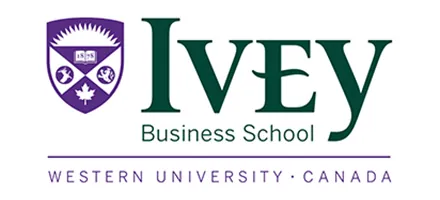Most of the leading business schools in North America and Europe are sponsors of the Forté Foundation, a nonprofit consortium that includes leading multinational corporations from Amazon to Goldman Sachs to Google, as well as the Graduate Management Admission Council. Harvard Business School, Chicago Booth, Wharton, MIT Sloan — and internationally, London Business School, HEC Paris, IE, INSEAD, and others — all support Forté’s mission to launch women into fulfilling and impactful careers through access to business education. And they are all part of the continuing progress toward that goal, which Forté announced today (November 14) has made another step toward the hallowed hallmark of parity by inching upward to an average of nearly 38% female enrollment across all member schools.
But even though it’s a step in the right direction that keeps alive the shorter-term goal of reaching 40% enrollment by 2020, progress is slowing, acknowledges Elissa Sangster, Forté Foundation CEO. In the last five years, women’s combined enrollment at business schools both in the U.S. and abroad increased to 37.8% on average, up from 33.6%; however, the last year saw only a 0.4% increase, up from 37.4%. Meanwhile, there have been other setbacks, Sangster notes, particularly a decline in the number of women CEOs.
“While the number of Fortune 500 women CEOs has declined in the last year, it’s heartening to see women’s enrollment in business school continues to increase, albeit at a slower pace than last year,” Sangster says. “We continue to aim for 40% women’s enrollment by 2020 at our member schools, as an MBA provides an economic mobility engine for women and helps build the pipeline of women leaders. And countless research shows that having more women in senior leadership improves corporate financial performance.
“We’re very pleased with the continued climb,” she continues. “It’s a slow and steady rate that hasn’t seen any large upticks more than 1.5% at the most over the last 15 years, so we’re always pleased to see a steady trend.”
POSITIVE TRENDS ABOUND, EVEN AS EURO SCHOOLS TAKE A STEP BACK

Elissa Sangster. Vanderbilt Owen photo
Of Forté’s 53 member schools, 19 have eclipsed 40% women enrollment, including HBS, Yale SOM, Northwestern Kellogg, Columbia Business School, and Dartmouth Tuck — 16 U.S. schools in all, as well as one Canadian school (York University’s Schulich School of Business). That means only two of the “40% Club” are in Europe: London Business School and Imperial College of London. In fact, despite the success of several Forté initiatives — particularly MBALaunch, a 10-month program that provides long-range guidance on and resources for the B-school application process — progress is undoubtedly slowing year over year, and part of the reason is international schools’ struggles to attract and enroll women, Sangster tells Poets&Quants. The 11 Forté member schools abroad (IMD joined the foundation this year but was not included in this batch of data) saw a decline from 36.2% last fall to 35.1% this fall, reversing a trend between 2016 and 2017 in which greater gains were made in women’s enrollment at schools abroad (almost 3.5%) than in the U.S. (less than 1%).
Financial aid hasn’t been the problem. Scholarships awarded to Forté Fellows have been key to increasing the number of women MBAs, Sangster says, climbing from 33 scholarships in 2003 to over 1,500 for the incoming class of 2018 and another 1,300 for second-year students. Since 2003, Forté sponsor schools have awarded over $180 million in scholarships to Forté Fellows. All that money deserves some credit for more than half of Forté’s schools — 29 in all — reaching 35% or greater female enrollment, up from only 14 schools in the fall of 2014.
“The big story is that 19 schools in the 40% pool, and that group has been growing,” Sangster says. “And the number at 35%-plus is growing, and so obviously below 30% is decreasing, and those are all trends that support an upward movement — and that is satisfying to us. It means the schools are making changes, the pipeline is growing, all of the variables in the equation are trending positive.
“(The European schools) had such a great increase last year, and we are seeing some really positive trends there. They may have stepped back a little bit this year. I can’t say that we’re disappointed — at least they aren’t showing wide volatility. But the negative variables are still in play: There are not enough women in the pipeline to fill all of those seats. So we still want to see growth in the number of women taking the test, the number of women applying to business school. But despite what is going on with the rhetoric in the media and globally what’s been happening, even despite that we’re still seeing improvement, so we’re pleased with that.”
CAUTION ON USC MARSHALL’S 52%
One top school has reached the long-sought parity threshold, but Sangster sounds a note of caution on USC Marshall’s well-publicized achievement. Though USC reached 52% in its 2018 incoming class, it did so a year after logging 32% female enrollment — a 20% jump in one year that Sangster is cautious about over-praising, particularly in light of the volatility in other schools’ enrollment numbers.
“We’re extremely proud that they hit that mark,” Sangster says, noting that three other schools came close: Northwestern Kellogg (46%), Dartmouth Tuck (45%), and Imperial College Business School (45%). “We would like to see the volatility decreasing in terms of some schools’ percentages jumping from 25% to 40% and then back to 25%. What we really want to see is a school consistently staying at that high number. For USC, that was a big leap, and I hope that that is sustainable. I don’t want to be the Debbie Downer of the group, and we are really excited that they hit that. And I think that sets a tone for the rest of the schools, so there’s never anything that is a real down side for someone hitting 50%. But like I said, we want to decrease volatility, and we want to see that you can consistently recruit a class that is diverse. Ultimately that’s the goal: to make sure that the class experience is a really positive one for all of the students they have recruited.”
Will the 53 Forté schools average the desired 40% mark in two years? “We have two more cycles, so we’ll see,” Sangster says.
“If we have two strong years — and we’ve had several before — we can see that being met. We’re interested in continuing to put that out there as an aspirational goal. We obviously don’t set the standard for all of our business schools. We’re asking them to do this, but I think as a collaborative group everybody would like to see that number hit. And I know schools are working hard to get to that number.”
DON’T MISS MBA PROGRAMS EDGING CLOSER TO GENDER PARITY and HOW USC MARSHALL ACHIEVED GENDER PARITY










